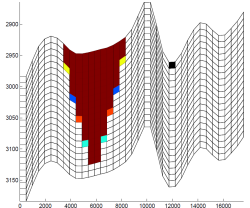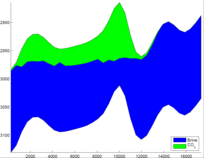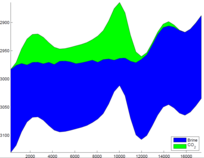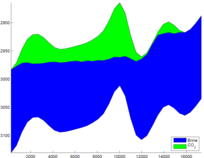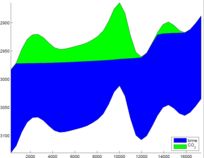|
Johansen Formation: VE Model Versus 3D Simulation
In this example, we compare the accuracy of a VE simulation to a series of 3D simulations with increasing vertical resolution.
The CO2 distribution after 2000 years of simulation computed with the full two-phase simulator for different z-resolutions (nz=5, 10, 20) compared with a simulation based on vertical equilibrium model (far right). A rather fine z-resolution is needed to get accurate results for the 3D simulator. |
|||||||

